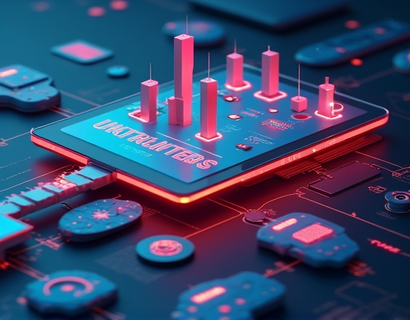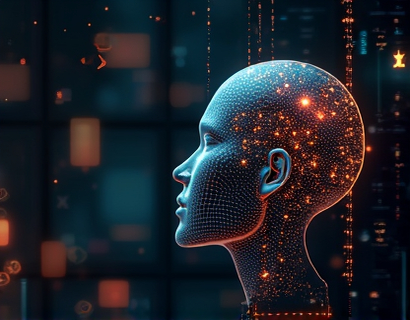AI Chat Avatar: Revolutionizing Digital Conversations with Cutting-Edge Technology
The digital landscape is rapidly evolving, and one of the most exciting frontiers is the integration of Artificial Intelligence (AI) in creating immersive and intelligent chat avatars. These AI-driven entities are not just simplistic text-based responses but are evolving into sophisticated conversational agents capable of engaging users in profound and meaningful interactions. This article delves into the world of AI chat avatars, exploring their capabilities, the technology behind them, and the profound impact they are having on digital communication.
The Emergence of AI Chat Avatars
The concept of AI chat avatars is not new, but recent advancements in natural language processing (NLP), machine learning, and cognitive computing have propelled these entities to a new level of sophistication. Unlike traditional chatbots that follow predefined scripts, AI chat avatars use advanced algorithms to understand and generate human-like responses. This capability allows them to navigate complex conversations, adapt to user preferences, and provide personalized experiences.
The emergence of AI chat avatars can be attributed to the convergence of several technological advancements. Improvements in NLP have enabled these avatars to comprehend and generate natural language with greater accuracy. Machine learning models, particularly deep learning techniques, have enhanced the ability of these avatars to learn from interactions and improve over time. Additionally, the development of more powerful and efficient computing resources has made it feasible to run complex AI models in real-time, ensuring smooth and responsive interactions.
Key Components of AI Chat Avatars
To understand how AI chat avatars function, it's essential to break down their key components. At the core, these avatars rely on a combination of NLP, machine learning, and cognitive computing.
NLP is the foundation of any chat avatar, enabling it to understand and interpret human language. This involves several subcomponents, including tokenization, parsing, and semantic analysis. Tokenization breaks down text into manageable units, such as words or phrases. Parsing involves analyzing the structure of sentences to understand their grammatical components. Semantic analysis goes a step further by interpreting the meaning behind the text, allowing the avatar to grasp context and nuances.
Machine learning, particularly deep learning, plays a crucial role in the adaptability and learning capabilities of AI chat avatars. Neural networks, especially recurrent neural networks (RNNs) and transformers, are employed to process and generate text. These models can capture long-term dependencies in language, making the avatar's responses more coherent and contextually relevant. Continuous learning from user interactions helps the avatar refine its understanding and improve its performance over time.
Cognitive computing enhances the avatar's ability to simulate human-like thinking and decision-making. This involves integrating knowledge graphs, which are structured representations of knowledge, and using them to provide contextually accurate and relevant responses. Cognitive computing also enables the avatar to handle complex tasks, such as reasoning, problem-solving, and even emotional intelligence, making interactions more natural and engaging.
Applications and Use Cases
The versatility of AI chat avatars makes them applicable across a wide range of industries and scenarios. Here are some notable use cases that highlight their potential:
- Customer Support: AI chat avatars can provide 24/7 support, handling common queries and issues with quick and accurate responses. This not only enhances customer satisfaction but also reduces the workload on human support teams.
- Education and Learning: In educational settings, chat avatars can serve as interactive tutors, providing personalized explanations and feedback. They can adapt to the learning pace of each student, making education more accessible and effective.
- Healthcare: Chat avatars can assist patients with basic health inquiries, provide medication reminders, and even offer emotional support. This can be particularly beneficial in remote areas where access to healthcare professionals is limited.
- Entertainment and Gaming: In the realm of entertainment, AI chat avatars can create immersive experiences by engaging users in storytelling, role-playing, and interactive games. This adds a new dimension to digital entertainment, making it more interactive and engaging.
- Virtual Assistants: Beyond traditional voice assistants, AI chat avatars can offer more sophisticated assistance, managing schedules, providing recommendations, and integrating with various smart devices to create a seamless user experience.
These applications demonstrate the broad potential of AI chat avatars, making them a valuable tool in enhancing user experiences across diverse domains.
Technological Advancements Enabling AI Chat Avatars
The development of AI chat avatars is driven by several technological advancements that have made their creation and deployment feasible. One of the most significant advancements is in the field of NLP.
Recent breakthroughs in NLP, particularly the development of transformer-based models like BERT (Bidirectional Encoder Representations from Transformers) and GPT (Generative Pre-trained Transformer), have revolutionized the way machines understand and generate human language. These models are pre-trained on vast amounts of text data, allowing them to capture intricate patterns and nuances in language. This pre-training is often followed by fine-tuning on specific tasks, enabling the chat avatar to perform effectively in its intended domain.
Another critical advancement is in the area of natural language generation (NLG). NLG techniques enable chat avatars to produce coherent and contextually appropriate text, making conversations flow naturally. This involves generating sentences that are not only grammatically correct but also semantically meaningful and engaging.
Additionally, the integration of multimodal learning has enhanced the capabilities of chat avatars. Multimodal models can process and generate multiple types of data, such as text, images, and audio. This allows chat avatars to incorporate visual elements into conversations, making interactions more rich and interactive. For example, a chat avatar could describe an image and allow the user to ask follow-up questions or provide additional context.
Challenges and Ethical Considerations
While AI chat avatars offer numerous benefits, their development and deployment also come with challenges and ethical considerations. One of the primary challenges is ensuring the accuracy and reliability of the avatar's responses. Misinformation or inappropriate content can undermine user trust and lead to negative consequences. To address this, rigorous testing and continuous monitoring are essential to maintain the quality of interactions.
Privacy and data security are also critical concerns. Chat avatars often handle sensitive user information, and ensuring the confidentiality and integrity of this data is paramount. Implementing robust security measures, such as encryption and access controls, is necessary to protect user data from unauthorized access and breaches.
Ethical considerations include the potential for AI chat avatars to manipulate users or influence their decisions. Transparency is key here; users should be aware that they are interacting with an AI and understand the capabilities and limitations of the avatar. Additionally, avoiding biases in the training data is crucial to prevent the avatar from perpetuating stereotypes or discriminatory behavior.
The Future of AI Chat Avatars
The future of AI chat avatars is promising, with ongoing research and development poised to push the boundaries of what these entities can achieve. One area of focus is enhancing emotional intelligence, enabling chat avatars to recognize and respond to users' emotions more effectively. This can lead to more empathetic and personalized interactions, making the experience more human-like.
Another exciting direction is the integration of AI chat avatars with augmented reality (AR) and virtual reality (VR) technologies. This convergence can create immersive environments where users can interact with avatars in a more realistic and engaging manner. For example, a virtual tour guide avatar could lead users through a historical site, providing detailed information and answering questions in real-time.
Furthermore, the development of more advanced cognitive models will enable chat avatars to handle more complex and nuanced conversations. This includes better understanding of context, long-term memory, and the ability to engage in multi-turn dialogues that require maintaining a coherent narrative.
As AI chat avatars become more sophisticated, they will play an increasingly significant role in various aspects of our digital lives. From personal assistants to educational tools and entertainment platforms, these entities will continue to evolve, offering new possibilities for interaction and engagement.
Conclusion
AI chat avatars represent a significant leap forward in digital communication, offering a blend of intelligence, adaptability, and interactivity that traditional chatbots cannot match. By leveraging advanced NLP, machine learning, and cognitive computing, these avatars are transforming how we interact with technology. As the technology continues to advance, the potential applications and benefits of AI chat avatars will only grow, making them an essential component of the future digital landscape.























